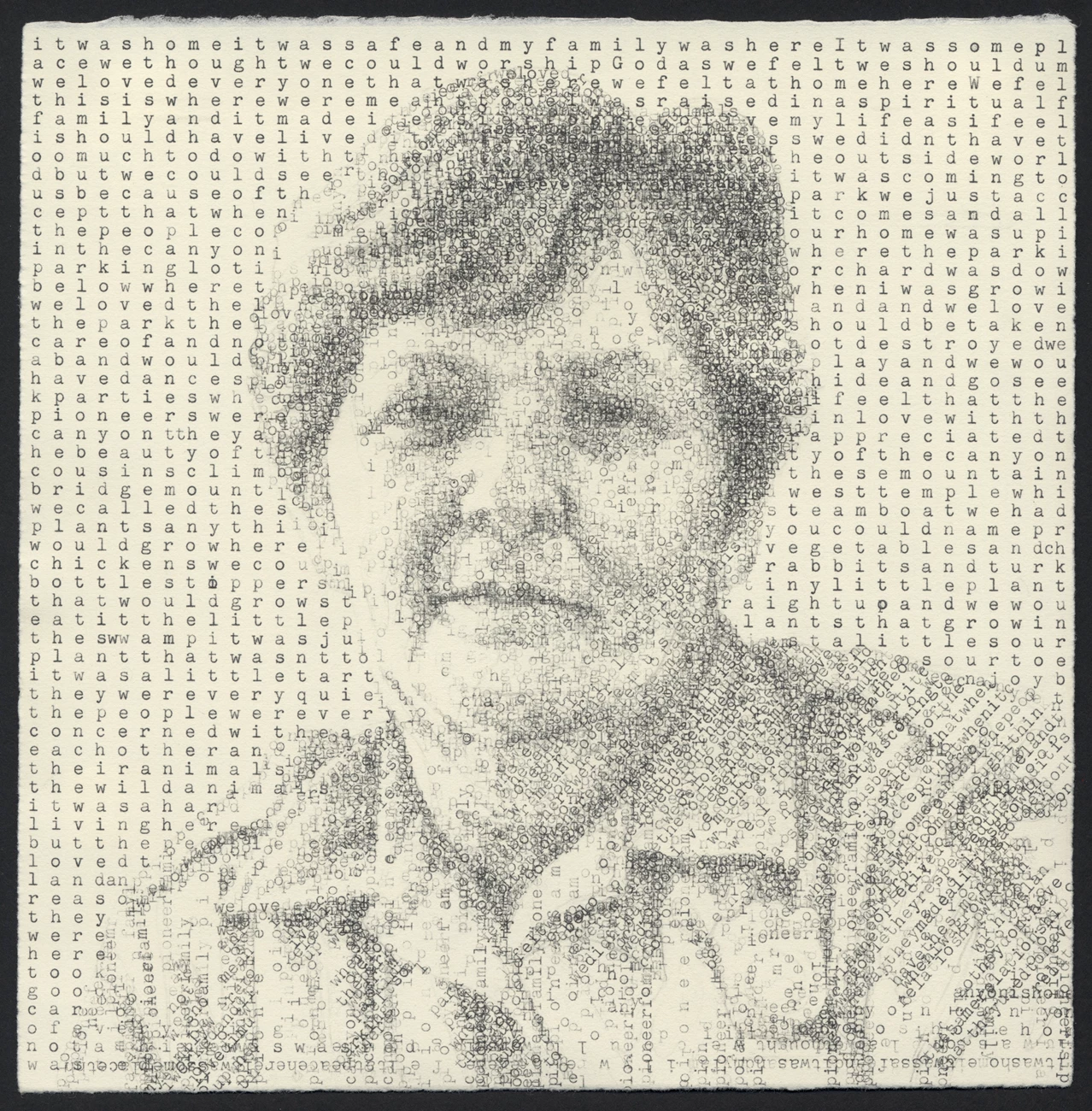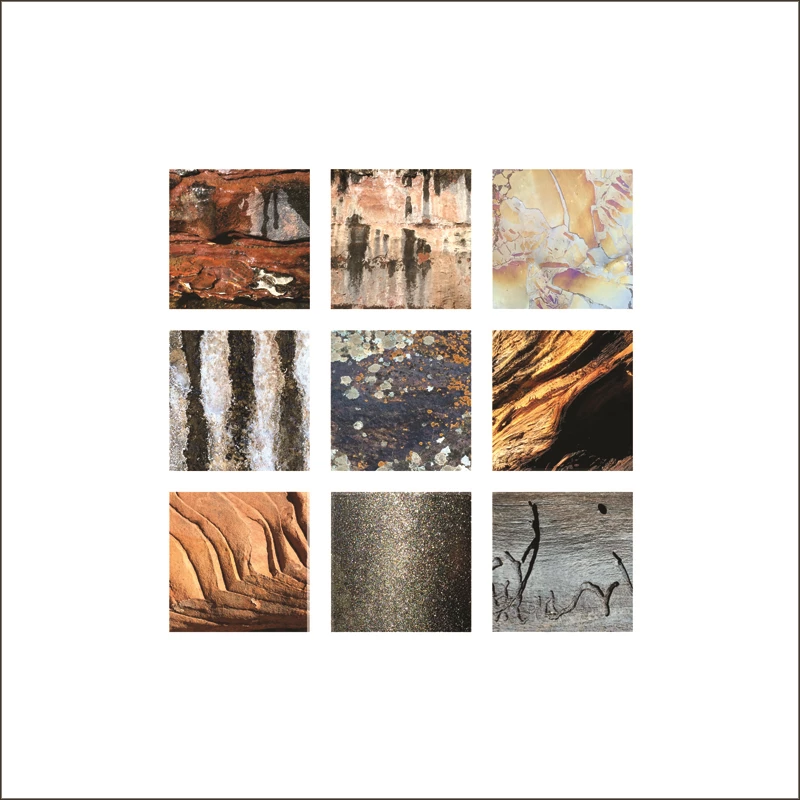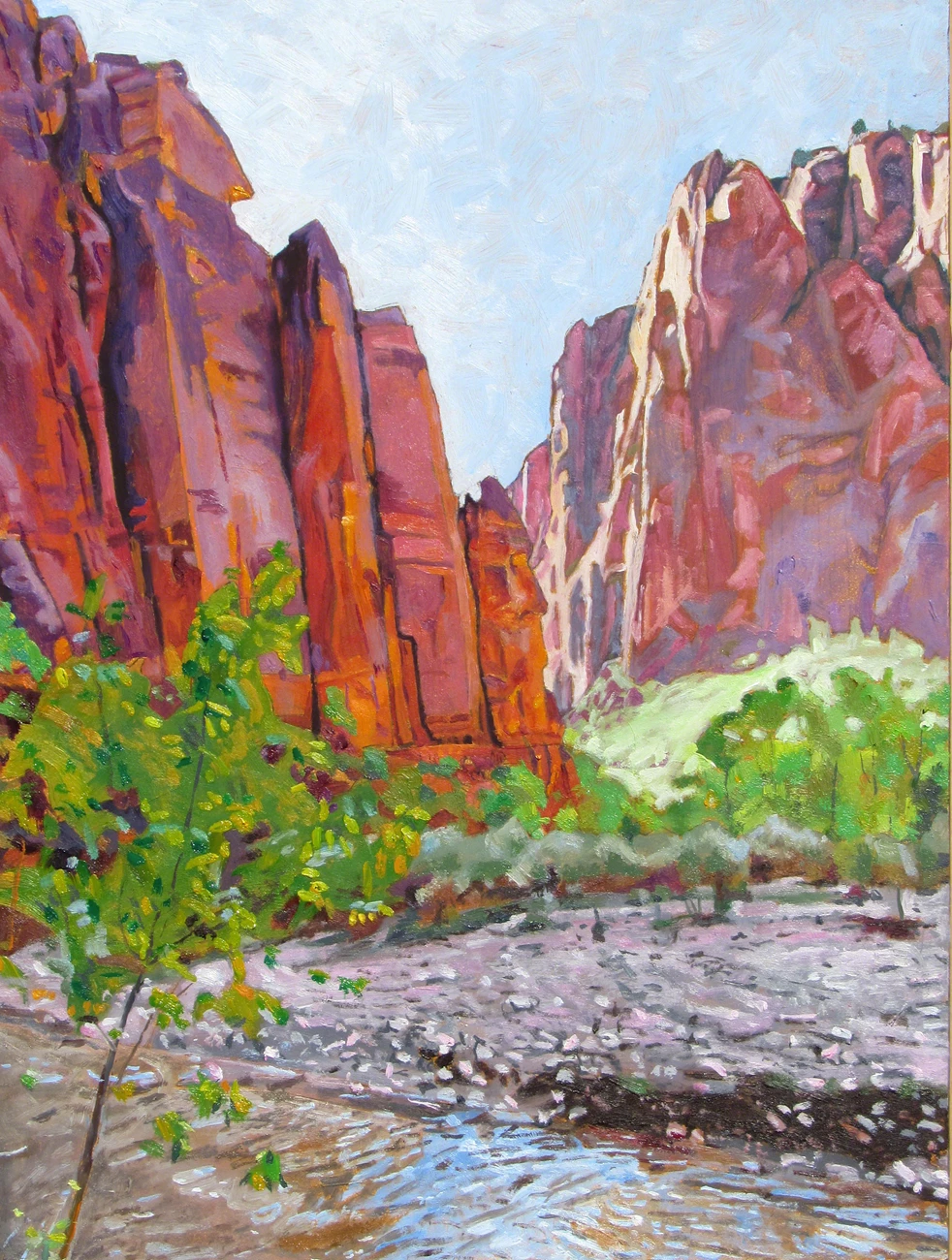
NPS Photo During my time as Artist-in-Residence at Zion National Park, my connection with the park transformed from an appreciation of an incredible landscape and friendly community to a place embedded with history and stories of people negotiating the changing natural and social landscape. My experience of the landscape was enlivened by these stories. The piece chosen for donation to the park, Vicki Parkinson, depicts one story that is particularly relevant to the history of Zion National Park.
Vicki Parkinson is a pioneer descendant and long-time Zion National Park staff member. Vicki is one of the first people I met at the park and she graciously spent an afternoon telling me about her family and professional history with the park. Her great-great grandfather was one of the earliest Mormon pioneers in Rockville in the 1840s and her grandmother was a member of the generation who sold their family farm and home to the Park in 1930. At the time of our meeting, three generations of her family were living in Rockville. Her deep connection to the park is in family stories and values that relate to thrift and survival both in Pioneer times, and a time in park history when all work and therefore survival was seasonal. I created Vicki’s image by typing words of her grandmother, Della Higley, describing memories of growing up in Zion Canyon in the early years of its establishment as a national park. The text is from a 2004 interview conducted by Vicki Parkinson with her grandmother for the project “Pioneer Voices of Zion Canyon” (Zion ACC #ZION-1154). The selections of the interview used to create this piece address various aspects of life in the canyon when Della was young, including what type of food was grown and foraged as well as description of recreational activities in the canyon and community. Excerpts speak about feelings of stewardship, an appreciation of beauty, and a life of social and religious security. Some excerpts used to create this piece include: “We had, had a band that would play and we would have dances. And then we would have “Hide-and-Go-Seek” parties.” “We loved the land, and we loved the park, and we felt that, that the land should be taken care of and not destroyed.” “Well the way I feel about was that it was home, it was safe and it was . . . and my family were here and, ah, we felt at peace here. It was someplace that we thought we could worship God as, as we felt we should. Um, we loved everyone that was here . . . we felt at home here. We felt that this is where we were meant to be. “ “I feel that the, the pioneers were in love with the canyon and they, they had a . . . I don’t know whether you would call it a – what you would call it. But they, they appreciated the land and they appreciated the beauty that was here.” -Leslie Nichols 
NPS Photo / Ben Rusnak The passing of a flash flood is marked by curling dried mud on the canyon floor of Clear Creek, where some of the bodies of seven hikers were found in the aftermath.
Visitors to the Narrows, a wet and cold hike up the Virgin River, leave muddy handprints on the canyon walls, an ancient yearning to mark our passage in this world. Zion Artist-in-Residence, September 2015. -Ben Rusnak 
NPS Photo It was with great enthusiasm that I spent time as an Artist-in-Residence documenting the intimate world of natural patterns, colors and textures at Zion National Park. I was particularly inspired by details that could easily be overlooked: swirls of blue caressing the surface of stagnant water, repetitive fissures or striations covering entire landscapes, circular lichen adorning a tiny stone, or bold patterns painting the curve of a cliff… thick like brush strokes. These aspects of the park are wonderfully rich in minerals, suggest a history of transformation, allude to the eco-system’s cornucopia and hint at the wellbeing of the environment all while decorating the landscape with innumerable shapes and hues.
In my artwork, I present landscape photographs in geometric compositions or as wing patterns for invented insects. Combined, these pieces create a series titled In the Landscape. It is my hope that this body of artwork will encourage viewers to take time to notice the aspects of the environment that are not typically on postcards and yet can be found throughout Zion’s landscape. By engaging in these micro-adventures perhaps a deeper connection to nature can be made, one that further encourages stewardship to the earth, beyond our human needs, for the millions of plants and animals that are dependent on the land continuing to thrive. -Zebith Thalden 
NPS Photo
Return to the Donated Artwork main page.
|
Last updated: November 19, 2019
